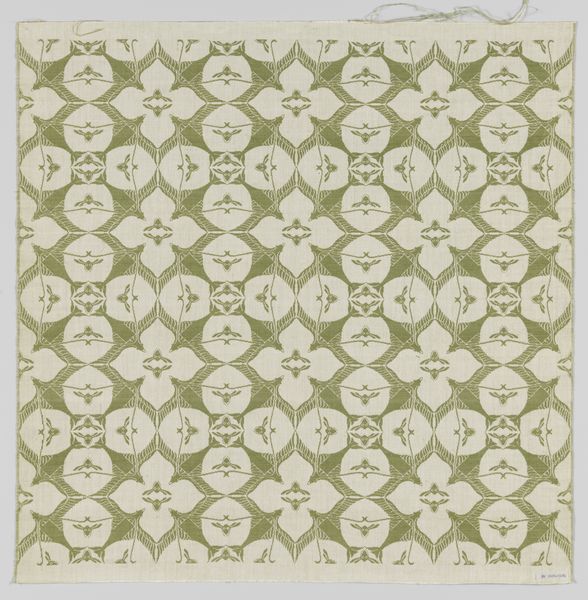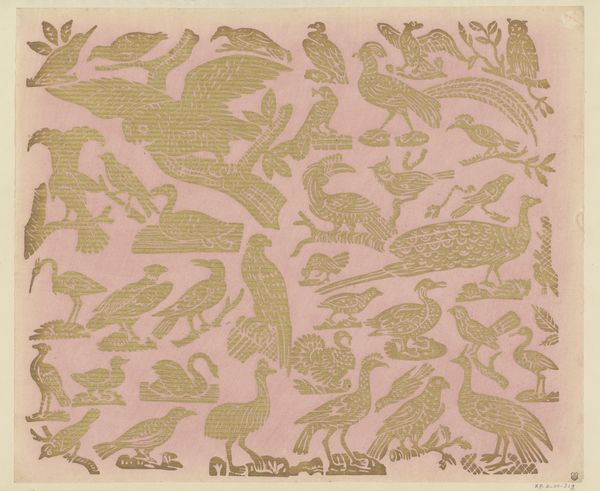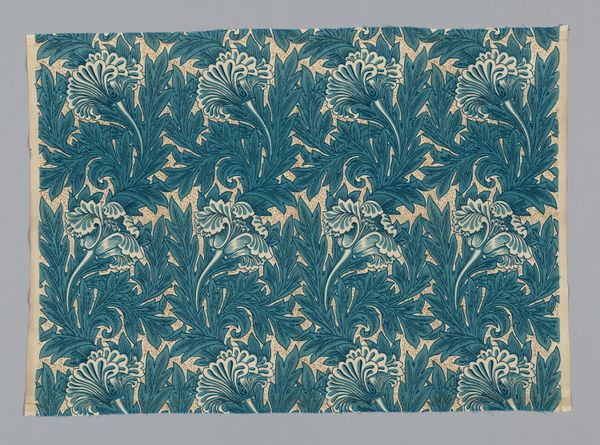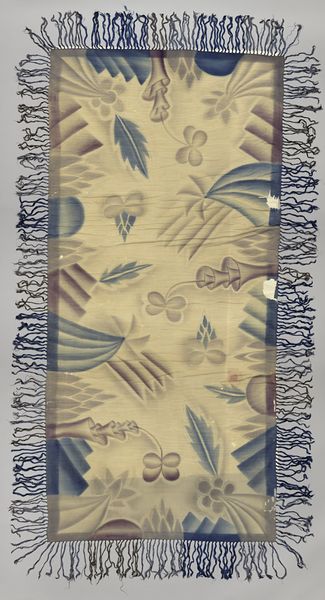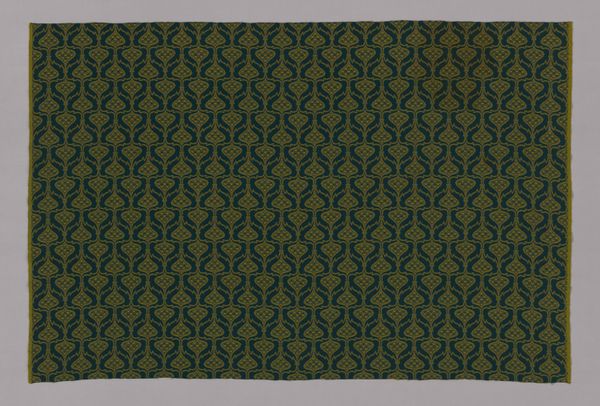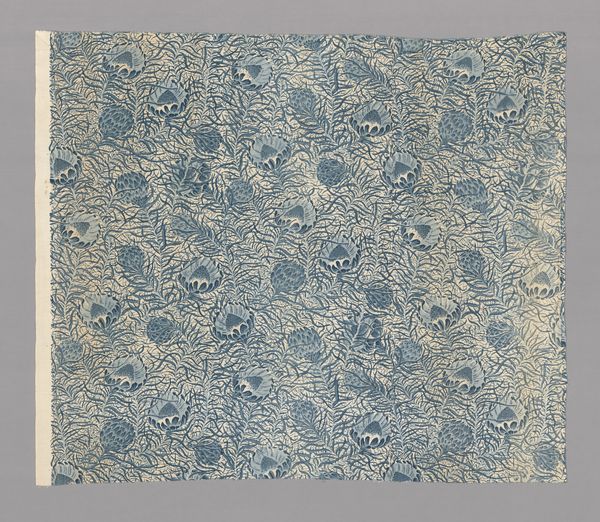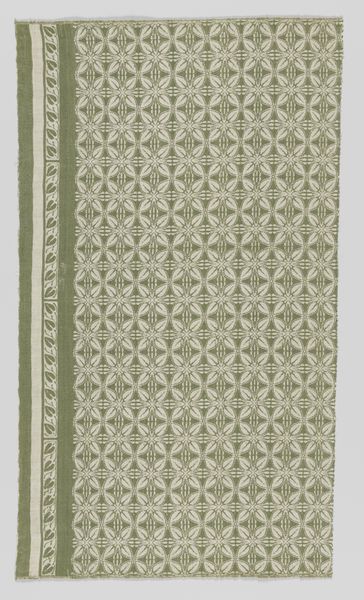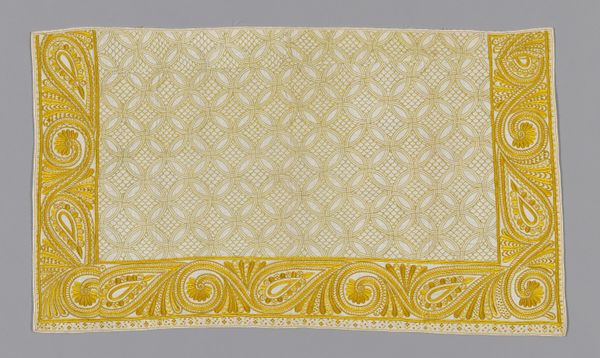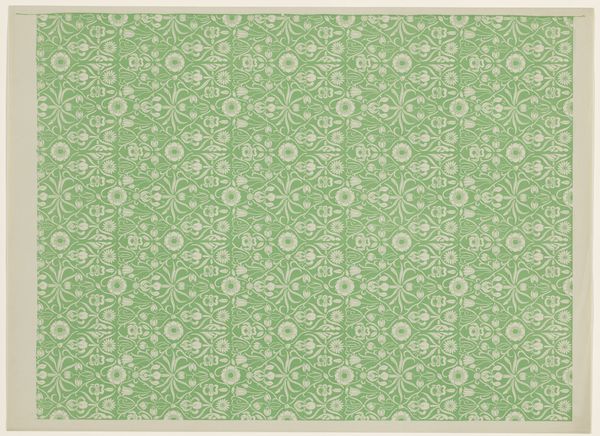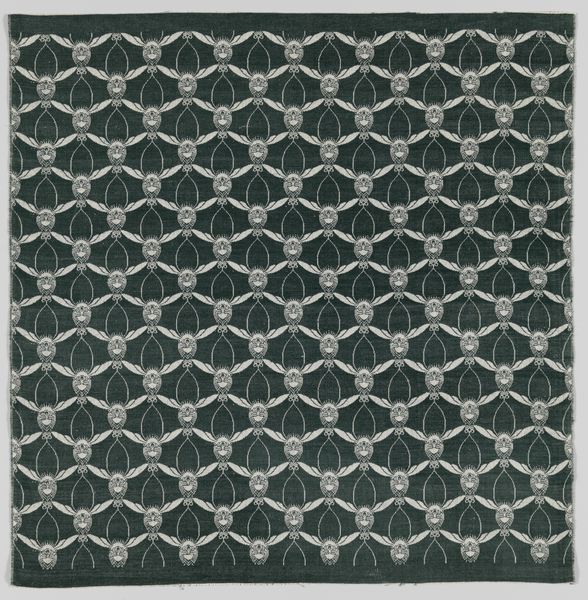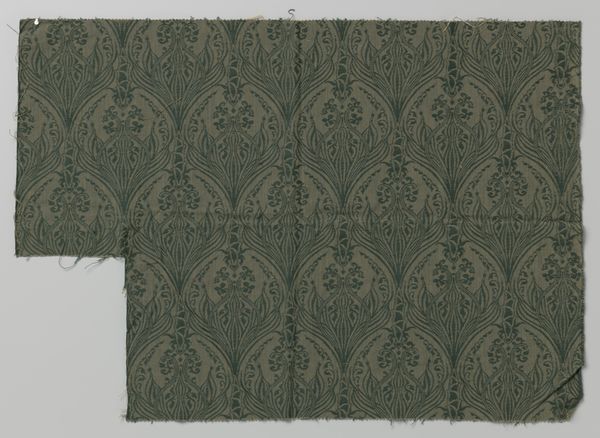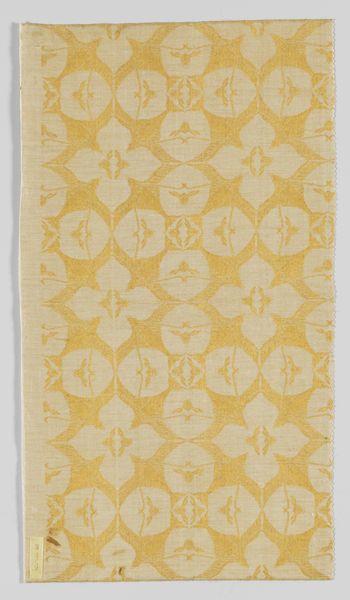
Wandbespanning van paarse damast met dessin van vogelnesten 1911 - 1915
0:00
0:00
textile
#
natural stone pattern
#
organic
#
art-nouveau
#
textile
#
geometric pattern
#
abstract pattern
#
repetitive shape and pattern
#
organic pattern
#
repetition of pattern
#
vertical pattern
#
pattern repetition
#
decorative-art
#
imprinted textile
#
layered pattern
Dimensions: height 146.5 cm, width 58.2 cm
Copyright: Rijks Museum: Open Domain
Curator: This textile artwork, titled "Wandbespanning van paarse damast met dessin van vogelnesten"—or "Wall Covering of Purple Damask with Design of Bird Nests"—was created by Chris Lebeau sometime between 1911 and 1915. It's a fascinating piece of weaving currently held at the Rijksmuseum. Editor: My initial impression is of serene repetition. The pale colors and overall flatness create a tranquil yet decorative space, it almost disappears but you can clearly see how skillfully its creator worked on it. Curator: It is decorative, indeed, and very much a product of its time. The Art Nouveau influence is undeniable, reflecting an era where design permeated every aspect of life, blurring the line between fine art and applied arts. Lebeau's choice of damask, a complex weaving technique itself, speaks volumes about the value placed on skilled craftsmanship. Editor: Absolutely. Let's consider the "purple damask," although what we're seeing here appears more of a faded sage, I wonder what it was back in the days. But the choice of material itself brings up the issue of labor and access. Damask weaving required specialized looms and skilled artisans. Who was the intended consumer? A bourgeois household looking to express its social status? And what social and labor issues were present when it was created? Curator: I agree. And beyond social implications, think of the politics of display. How would this textile have functioned in its intended environment? Was it designed for a private residence, perhaps as a backdrop to showcase other artworks, or for a more public setting, thereby disseminating certain aesthetic and social values? It reflects an organic theme but also is highly decorative. Editor: The repetitive pattern – the bird nests – draws the eye, leading to contemplation. But even those seemingly "organic" forms are so abstracted, so stylized. Was Lebeau perhaps making a statement about humanity's relationship with nature? The labor invested in abstracting nature's forms highlights how art-making and craft-making are intertwined. Curator: Certainly, this piece exists at an intersection. It embodies an early 20th-century drive to aestheticize daily life. Lebeau, as a designer-craftsman, wasn’t just creating a pretty surface; he was shaping the cultural landscape of his time through the politics of image-making. Editor: Thinking about the artist as a craftsman leads me to consider production and the human engagement of creating. Looking at the material and reflecting on the creator's contribution makes me recognize the artistic and symbolic importance and connection. Curator: And understanding that symbolism through both historical context and material analysis, adds further layers to our understanding. It emphasizes the societal impact an artist can have and what was going on in the world back in the early 20th century.
Comments
No comments
Be the first to comment and join the conversation on the ultimate creative platform.
